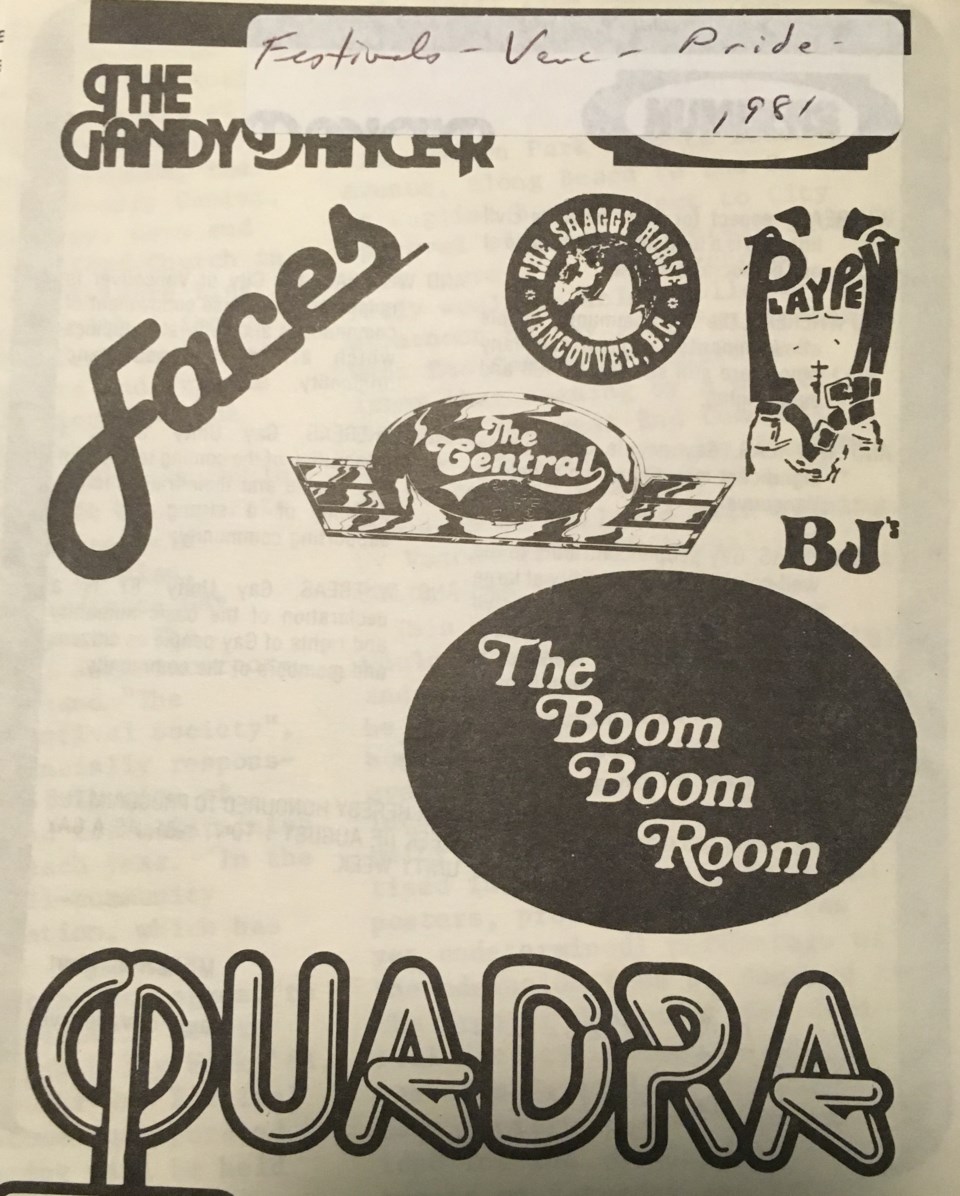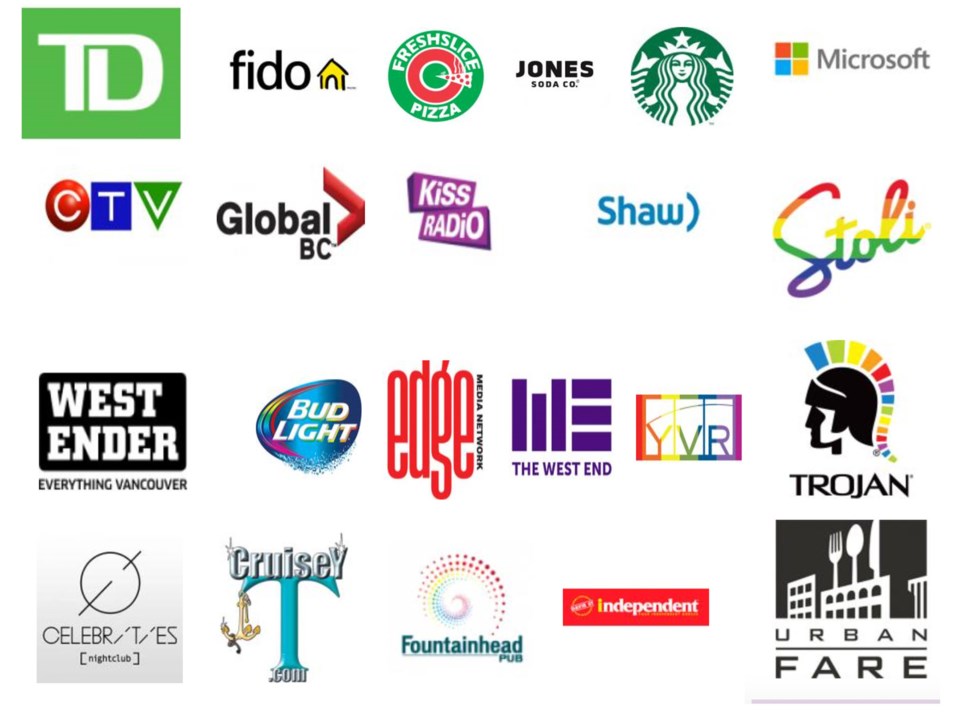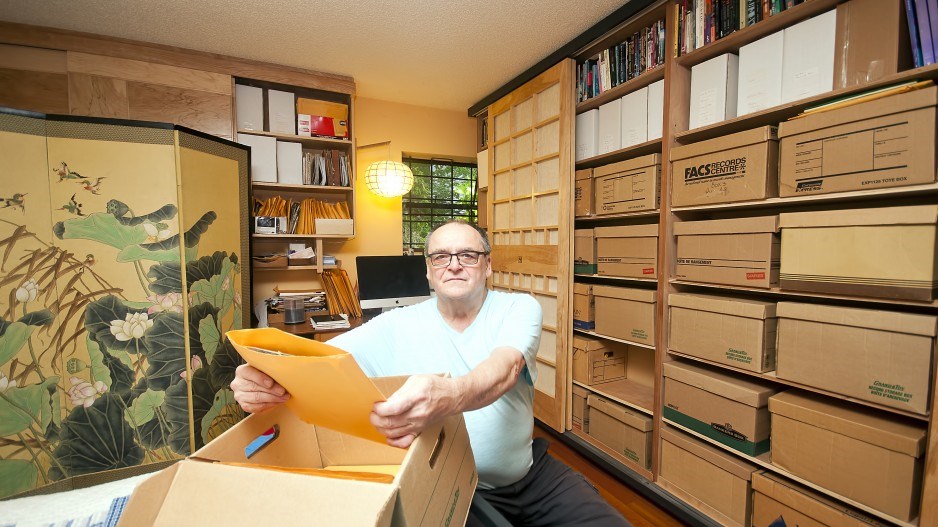“A lot of businesses were reticent about being attached to the gay community when they didn’t feel like they would get any bang for their buck,” said Ron Dutton, archivist for the B.C. Gay and Lesbian Archives, a collection of research materials for the city’s lesbian, gay, bisexual, transgender and queer (LGBTQ) community. “Basically, business is relatively conservative as to where its going to put its advertising dollars. It’s not going to put advertising dollars into something that doesn’t, in their view, enhance their business. “
In 1981, the first week of August was declared Gay Unity Week by then Vancouver mayor Mike Harcourt. The parade had been run for three years prior to that summer but there wasn’t much obvious support for gay pride among the business community, and the mayoral endorsement did little to help corporate sponsorship.

Sponsorship page of the Vancouver Pride Parade program in 1981

Partnership page of the Vancouver Pride Parade website in 2016
According to Dutton, the event started out small, with less need for money to pay for necessities like security and cleanup, and with the intended goal of raising awareness for the LGBTQ community. It had to rely on its own members for financial support.
“At that time, basically business wouldn’t touch the Pride parade,” Dutton said. “There was certainly low-grade sponsorship from some gay business, such as several travel agencies, restaurants and of course gay bars.”
The event gradually landed bigger businesses. In 1985, Pride gained its first media partner outside of LGBTQ community publications, the West Ender.
In 1994, Labatt and Molson were both sponsors of the event. Dutton considered sponsorship by beer producers to be a result of the popularity of LGBTQ bars and nightclubs.
However, Dutton said, the biggest sponsorship milestone for the event was Vancity credit union’s decision to show its support in mid-1997. That broke a corporate logjam preventing Pride from receiving major financial backing, he said.
According to Dutton, the decision to support Vancouver’s LGBTQ community wasn’t without its challenges. At the time of its sponsorship, Vancity also had a program organized with the Catholic School Board. The program was aimed at teaching children about finance and giving them their first exposure to a financial service institution. After Vancity publicly demonstrated its support for the Vancouver Gay Pride Parade, the Catholic Church ended the program.
Corporations concerned about their bottom line were initially hesitant about showing support, financial or otherwise, for the LGBTQ community. According to Dutton, banks were particularly reserved about partnering with Vancouver Pride over fears of losing depositors. Yet many of them ultimately saw Vancity’s support of gay pride as a success and others soon followed suit.
In 2001, Global Television became a sponsor. This year the Vancouver Pride Society has 16 media partners including CTV and Shaw. .
At the same time as Vancity’s actions started to encourage other corporate sponsorship, Vancouver-based municipal agencies and civic unions began publicly announcing support. According to Dutton, unionized postal workers and library staff were also early supporters of Vancouver Pride. The park board was one of the first to show support for the LGBT community in 1994.
With the help of early supporters, businesses began to look at the Vancouver Pride Parade as an opportunity rather than a risk.
“Business started to wake up and say, ‘Here is a group of people who make money. They have disposable cash, have a consumer culture and we’re not taking advantage of it and Vancity is.’ Year by year you can almost chart the increase in corporate sponsorship,” said Dutton.
Eventually businesses viewed Pride as a lucrative marketing opportunity. This caused some in the LGBTQ community to fear that pride was becoming too corporate.
Ken Coolen, former Vancouver Pride president and the subject of the documentary Beyond Gay, which explores the corporatization of the Pride event, said business involvement is a concern for some because they fear that the grassroots political message is being lost.
“Its kind of a catch-22 in that, yes, there are a lot of corporate entities in Pride now, but the flip side of that is we would not be where we are with Pride if we did not have those entities involved,” said Coolen.
Pride today is larger then ever. Growth in sponsorship has correlated with growth in attendance. In 1981 there were 800 people and sponsorship was limited to LGBTQ business like Numbers Nightclub and the Boom Boom Room. The 2016 event is expected to have 600,000 people with more than 48 businesses listed as partners on its website.




